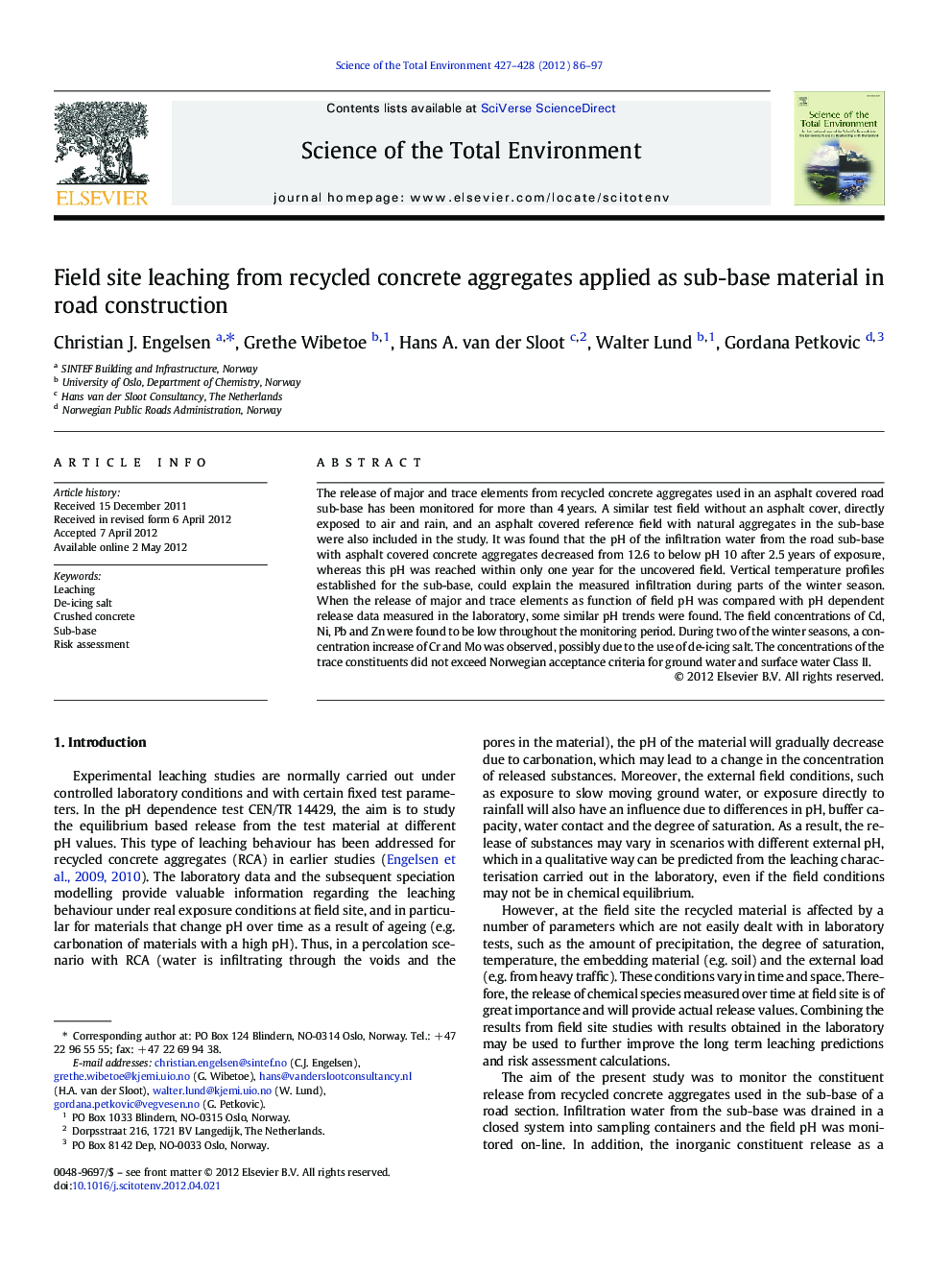| کد مقاله | کد نشریه | سال انتشار | مقاله انگلیسی | نسخه تمام متن |
|---|---|---|---|---|
| 4429412 | 1619824 | 2012 | 12 صفحه PDF | دانلود رایگان |

The release of major and trace elements from recycled concrete aggregates used in an asphalt covered road sub-base has been monitored for more than 4 years. A similar test field without an asphalt cover, directly exposed to air and rain, and an asphalt covered reference field with natural aggregates in the sub-base were also included in the study. It was found that the pH of the infiltration water from the road sub-base with asphalt covered concrete aggregates decreased from 12.6 to below pH 10 after 2.5 years of exposure, whereas this pH was reached within only one year for the uncovered field. Vertical temperature profiles established for the sub-base, could explain the measured infiltration during parts of the winter season. When the release of major and trace elements as function of field pH was compared with pH dependent release data measured in the laboratory, some similar pH trends were found. The field concentrations of Cd, Ni, Pb and Zn were found to be low throughout the monitoring period. During two of the winter seasons, a concentration increase of Cr and Mo was observed, possibly due to the use of de-icing salt. The concentrations of the trace constituents did not exceed Norwegian acceptance criteria for ground water and surface water Class II.
► An extensive field work was carried out to study the potential leaching from a road sub-base constructed with crushed concrete.
► Field pH development as a function of time was established.
► Leaching as function of field pH was compared to laboratory data and for some elements a correlation was found.
► The presence of de-icing salt may influence constituents that readily form oxyanions (e.g. CrO42 −).
► Risk assessment was carried out and the released concentrations were found to be acceptable.
Journal: Science of The Total Environment - Volumes 427–428, 15 June 2012, Pages 86–97